We first heard about it nearly twenty years ago when we were in South Africa. Andrew and Wendy had taken upon themselves the task of ensuring that the Indian visitors did not leave South Africa without seeing something of their country. They planned weekend trips and ferried us around to several places both within and outside Pretoria that we would have never visited but for them. Always ready with more ideas, Wendy urged us to visit Etosha National Park (in Namibia) and Okavango Delta (in Botswana) during our stay in SA. While we did not manage to get there then, these places have always been on our minds.
This long held memory essentially tilted the balance towards turning west from Bulawayo to Botswana and Namibia rather than continue on Zimbabwe, Malawi, Mozambique route we had been contemplating for some time
. Malawi started inching up the 'desirable destination' list after we had heard about the charms of Lake Malawi from several travelers we had met earlier on this trip. But the pull of the Okavango proved stronger.
The Okavango Delta, the world's largest inland delta, is the spectacular result of the Okavango River flowing into the Kalahari Desert. We've always been fascinated by this delta where the river simply vanishes into the desert air and sands. No ocean or lake destination for this river as is the case with other rivers. Swollen with floodwaters from the summer rains, the river travels from the Angolan highlands, past the Namibian Caprivi strip and crosses into Botswana. The river pushes through from the north of the country and eventually encounters a landscape that is completely flat. With less than 2 meters variation in height, the water spreads like an open palm creating a stunning mosaic of channels, lagoons, ox-bow lakes, flooded grasslands and thousands of islands of a variety of shapes and sizes
.
As the water flows through these myriad waterways, much of it, almost 95%, either evaporates or gets swallowed by the Kalahari sands. Only 2 to 3 percent of the water reaches the delta’s southern fringes. Being located in an extremely arid desert region, it attracts great concentrations of animals and birds, making it a complex (and unique) ecosystem as well as Botswana's premier tourist attraction.
But the size and scope of the region makes it somewhat of a challenge for a (budget conscious) independent traveler to plan a visit. Moremi Game Reserve (the only part of the delta that is protected) and the inner delta are difficult to get to and most accessible by charter flights. Besides the few exclusive lodges that operate in this area have truly jaw-dropping prices. The part of the delta closer to the eastern fringe is far more accessible and trips are cheaper and easier to arrange from Maun.
We signed up for a 2 day trip by mokoro, a traditional dugout canoe
. This included a night of camping in the bush and we were eager to witness a sunset in the delta. We were joined by a couple of other travelers, a young woman from South Korea and a young man from Brooklyn, New York.
We were first transported on a motorized boat up the Thamalakane River to Buffalo Fence, so called because the fence separates cattle districts of Botswana from the wilderness of the Okavango delta and runs through here. It was built to keep buffalo and other wild animals separate from domestic stock.
There we were met by members of the Okavango Kapano Mokoro Community Trust, an organization of local community fishermen that provides guides and polers to take people into the delta. It is an alternative source of employment for these people and helps keep them committed to taking care of the environment. We transferred into the mokoros and settled down to be transported deeper into the delta
.
The mokoro is paddled using only a pole and is the quietest and most eco-friendly way of traveling. With years of experience the poler expertly navigated through the network of water channels, deciding on which paths to take depending on the water level at the time. The meandering waterways are fringed with papyrus reeds, sometimes so thick that the front of the mokoro would part the reeds just inches from your face (more so if you are sitting in the front).
Gliding through the watery expanse past large swathes covered with stunning water-lilies and enjoying it in complete silence was a delightful way to experience the region. We passed through several palm-fringed islands and thick woodland with lush vegetation. We stopped to admire well-camouflaged frogs that live on the reeds and look at the birds that were perched on trees along the way. We saw many of the usual suspects - cormorants, kingfishers, plovers and the red bishop
. After poling upstream for 90 minutes, we arrived at an island deemed suitable for setting up camp and the tents were put up.
Video of mokoro gliding on the water
After a delicious meal that was prepared on an open fire, we were given the opportunity to try our hands steering a mokoro. Our guide gave us brief verbal instructions on the basics and and handed over the pole giving us a change to earn our Okavango Mokoro License, a piece papyrus reed. We are happy to report that both M and V passed the test on our first attempt and are now qualified mokoro operators.
We were immediately rewarded with a thunderstorm that lit the delta and showered it with heavy rain. We enjoyed this spectacle till it got too heavy forcing us to rush into our tents for shelter.
Early evening we set out on foot for a walking safari into the island. We trudged through the tall grass and plodded through huge elephant dung mounds, following some existing trails and making some new ones as the old ones were flooded
. Distant trees and large termite mounds were often the only landmarks. Acacias, African mangosteens, Raintrees and the Mopane tree with leaves that look like butterfly wings were the dominant species around. We stopped to examine bleached jaw-bones and skulls of zebras and other animals. The highlight of wildlife viewing was a herd of zebras that we spotted from a distance and then walked towards. Dark clouds threatening a downpour again gathered on the horizon prompting our return and we were back at camp in time to enjoy the pink sunset glow on the delta.
Early next morning we went on our second walking safari to a different island and encountered more insects, birds, antelopes. Our efforts to get to the far end of that island was thwarted by heavily flooded trails that would have required us to wade waist deep in water. On our way back, the guide kept us entertained by telling us stories of various encounters with lions that have taken place here. The afternoon was free for us to enjoy the surroundings of the camp and the sumptuous meals that were provided. Later in the evening we were back on the mokoros for the trip back to Maun.
Google Maps Link
Where A River Vanishes In The Kalahari
Tuesday, February 05, 2013
 Okavango Delta, Botswana
Okavango Delta, Botswana
Other Entries
-
132Camel Trek in the Sahara
Jan 0729 days prior Chinguetti, Mauritaniaphoto_camera25videocam 0comment 3
Chinguetti, Mauritaniaphoto_camera25videocam 0comment 3 -
133An Oasis Interlude
Jan 0828 days prior Terjit, Mauritaniaphoto_camera8videocam 0comment 1
Terjit, Mauritaniaphoto_camera8videocam 0comment 1 -
134Where Nomads Settle Down
Jan 1026 days prior Nouakchott, Mauritaniaphoto_camera19videocam 0comment 1
Nouakchott, Mauritaniaphoto_camera19videocam 0comment 1 -
135Across The Senegal River
Jan 1125 days prior Rosso, Mauritaniaphoto_camera11videocam 0comment 1
Rosso, Mauritaniaphoto_camera11videocam 0comment 1 -
136Sans GPS, Still Not Lost
Jan 1224 days prior Saint-Louis, Senegalphoto_camera15videocam 0comment 1
Saint-Louis, Senegalphoto_camera15videocam 0comment 1 -
137Barberie
Jan 1323 days prior Langue De Barbarie, Senegalphoto_camera17videocam 0comment 1
Langue De Barbarie, Senegalphoto_camera17videocam 0comment 1 -
138Westernmost Point Of Africa
Jan 1521 days prior Dakar, Senegalphoto_camera21videocam 0comment 3
Dakar, Senegalphoto_camera21videocam 0comment 3 -
139English Spoken Here!
Jan 1620 days prior Banjul, Gambiaphoto_camera15videocam 0comment 3
Banjul, Gambiaphoto_camera15videocam 0comment 3 -
140A Birder's Paradise
Jan 1917 days prior Tanji, Gambiaphoto_camera31videocam 0comment 3
Tanji, Gambiaphoto_camera31videocam 0comment 3 -
141Out of Western Africa and onto Southern Africa
Jan 2115 days prior Dakar, Senegalphoto_camera0videocam 0comment 4
Dakar, Senegalphoto_camera0videocam 0comment 4 -
142Lusaka
Jan 2511 days prior Lusaka, Zambiaphoto_camera11videocam 0comment 2
Lusaka, Zambiaphoto_camera11videocam 0comment 2 -
143The largest water curtain in the world, I presume?
Jan 288 days prior Livingstone, Zambiaphoto_camera15videocam 0comment 1
Livingstone, Zambiaphoto_camera15videocam 0comment 1 -
144Same Falls, Different View
Jan 297 days prior Victoria Falls, Zimbabwephoto_camera22videocam 0comment 1
Victoria Falls, Zimbabwephoto_camera22videocam 0comment 1 -
145A Day at Chobe National Park
Jan 306 days prior Chobe National Park, Botswanaphoto_camera52videocam 0comment 2
Chobe National Park, Botswanaphoto_camera52videocam 0comment 2 -
146Zambezi River Cruise
Jan 315 days prior Victoria Falls, Zimbabwephoto_camera11videocam 0comment 0
Victoria Falls, Zimbabwephoto_camera11videocam 0comment 0 -
147Bulawayo
Feb 014 days prior Bulawayo, Zimbabwephoto_camera9videocam 0comment 2
Bulawayo, Zimbabwephoto_camera9videocam 0comment 2 -
148180 Degree Turn
Feb 032 days prior Maun, Botswanaphoto_camera7videocam 0comment 1
Maun, Botswanaphoto_camera7videocam 0comment 1 -
149Where A River Vanishes In The Kalahari
Feb 05 Okavango Delta, Botswanaphoto_camera28videocam 0comment 7
Okavango Delta, Botswanaphoto_camera28videocam 0comment 7 -
150To Windhoek - By Hook Or Crook
Feb 072 days later Windhoek, Namibiaphoto_camera3videocam 0comment 1
Windhoek, Namibiaphoto_camera3videocam 0comment 1 -
151Windhoek
Feb 083 days later Windhoek, Namibiaphoto_camera11videocam 0comment 2
Windhoek, Namibiaphoto_camera11videocam 0comment 2 -
152Dogs Save Cheetahs!
Feb 094 days later Otjiwarongo, Namibiaphoto_camera7videocam 0comment 1
Otjiwarongo, Namibiaphoto_camera7videocam 0comment 1 -
153Etosha
Feb 116 days later Etosha National Park, Namibiaphoto_camera51videocam 0comment 2
Etosha National Park, Namibiaphoto_camera51videocam 0comment 2 -
154Through The Land of the Damara
Feb 138 days later Kamanjab, Namibiaphoto_camera23videocam 0comment 5
Kamanjab, Namibiaphoto_camera23videocam 0comment 5 -
155Dorob National Park
Feb 149 days later Hentiesbaai, Namibiaphoto_camera14videocam 0comment 1
Hentiesbaai, Namibiaphoto_camera14videocam 0comment 1 -
156How Many Is Too Many?
Feb 149 days later Cape Cross, Namibiaphoto_camera16videocam 0comment 1
Cape Cross, Namibiaphoto_camera16videocam 0comment 1 -
157Moonscape and Welwitschia
Feb 1611 days later Swakopmund, Namibiaphoto_camera13videocam 0comment 1
Swakopmund, Namibiaphoto_camera13videocam 0comment 1 -
158Long-Legged Beauties
Feb 1611 days later Walvis Bay, Namibiaphoto_camera10videocam 0comment 1
Walvis Bay, Namibiaphoto_camera10videocam 0comment 1 -
159Crossing the Tropic of Capricorn
Feb 1712 days later Solitaire, Namibiaphoto_camera15videocam 0comment 2
Solitaire, Namibiaphoto_camera15videocam 0comment 2 -
160Flaming Dunes of the Namib Desert
Feb 1813 days later Sossusvlei, Namibiaphoto_camera24videocam 0comment 1
Sossusvlei, Namibiaphoto_camera24videocam 0comment 1 -
161Namibia wrap-up
Feb 1914 days later Windhoek, Namibiaphoto_camera10videocam 0comment 0
Windhoek, Namibiaphoto_camera10videocam 0comment 0 -
162Revisiting Cape Town
Feb 2217 days later Cape Town, South Africaphoto_camera15videocam 0comment 1
Cape Town, South Africaphoto_camera15videocam 0comment 1 -
163Cape Peninsula
Feb 2318 days later Cape of Good Hope, South Africaphoto_camera18videocam 0comment 2
Cape of Good Hope, South Africaphoto_camera18videocam 0comment 2 -
164Swartberg Pass Loop
Feb 2722 days later Oudtshoorn, South Africaphoto_camera14videocam 0comment 2
Oudtshoorn, South Africaphoto_camera14videocam 0comment 2 -
165The Garden Route
Mar 0225 days later Knysna, South Africaphoto_camera18videocam 0comment 2
Knysna, South Africaphoto_camera18videocam 0comment 2 -
166Rocket Showers On The Wild Coast
Mar 0427 days later Bulungula, South Africaphoto_camera24videocam 0comment 1
Bulungula, South Africaphoto_camera24videocam 0comment 1 -
167Kingdom In The Sky
Mar 0629 days later Sani Pass, Lesothophoto_camera45videocam 0comment 1
Sani Pass, Lesothophoto_camera45videocam 0comment 1
Comments
2025-05-23
Comment code: Ask author if the code is blank

 Okavango Delta, Botswana
Okavango Delta, Botswana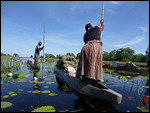
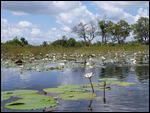
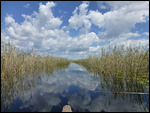

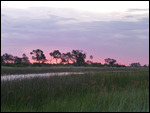










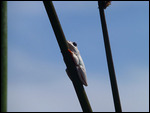
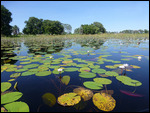
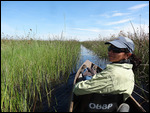
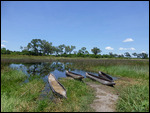
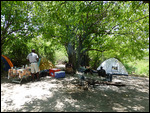

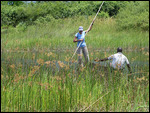

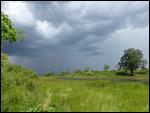
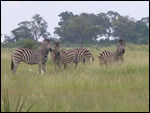
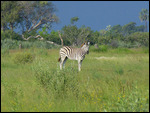
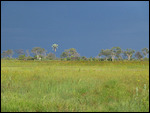
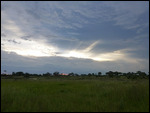
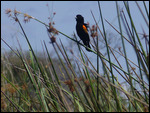
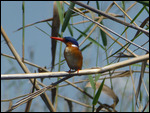

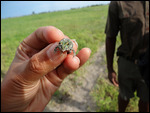
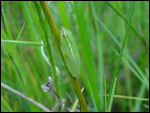
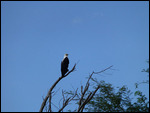
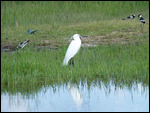
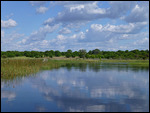
Ramesh
2013-02-28
Congratulations on earning your mokoro licence !!
Oh - so this was the wet season. Great to go at a time when the water was all round. I belive, in the dry season, it dries up completely
Is the Buffalo fence still there. In the Cry of the Kalahari, which I referred to in the comment on the earlier post, Mark laments on how the fence has been so disruptive to the wild life.
Yet another evocative post.
parleusted
2013-03-01
@Ramesh - Yes, it is the wet season. Water levels were high and expected to rise further. Even smaller channels have filled up giving rise to additional navigable paths making it easier for the mokoros. But the widespread availability of water also means that wildlife is more dispersed and harder to track.
parleusted
2013-03-01
Just managed to upload a mokoro video on YouTube. Added the link in the text. Here it is as well. http://www.youtube.com/watch?v=YTIM8ikJjtU
Will try to upload videos of mokoro driving tests soon....
parleusted
2013-03-01
@Ramesh - Regarding the Buffalo Fence, yes, it still exists.
In fact new fences continued to be erected despite the controversy. But now it is primarily done to keep the peace between wildlife and subsistence farmers who live on the edge of the delta. We read of an example where it was considered somewhat justified (at least by some). The river Boteti, once a a natural barrier between wilderness and cattle farmers on the opposite bank, started to dry up. Waterholes were created in dry channel for use of both cattle and wildlife but the cattle were unsuccessfully competing with large herds of zebra and wildebeest. A fence was considered the only option and a zigzag fence in the channel was erected with some waterholes on each side!
kvbigman@gmail.com
2013-03-02
You lost your driving license earlier. Will the mokoro license allow you to drive back home ?
parleusted
2013-03-02
@kvbigman - The license is valid only on Class M mokoros that ply in the delta.